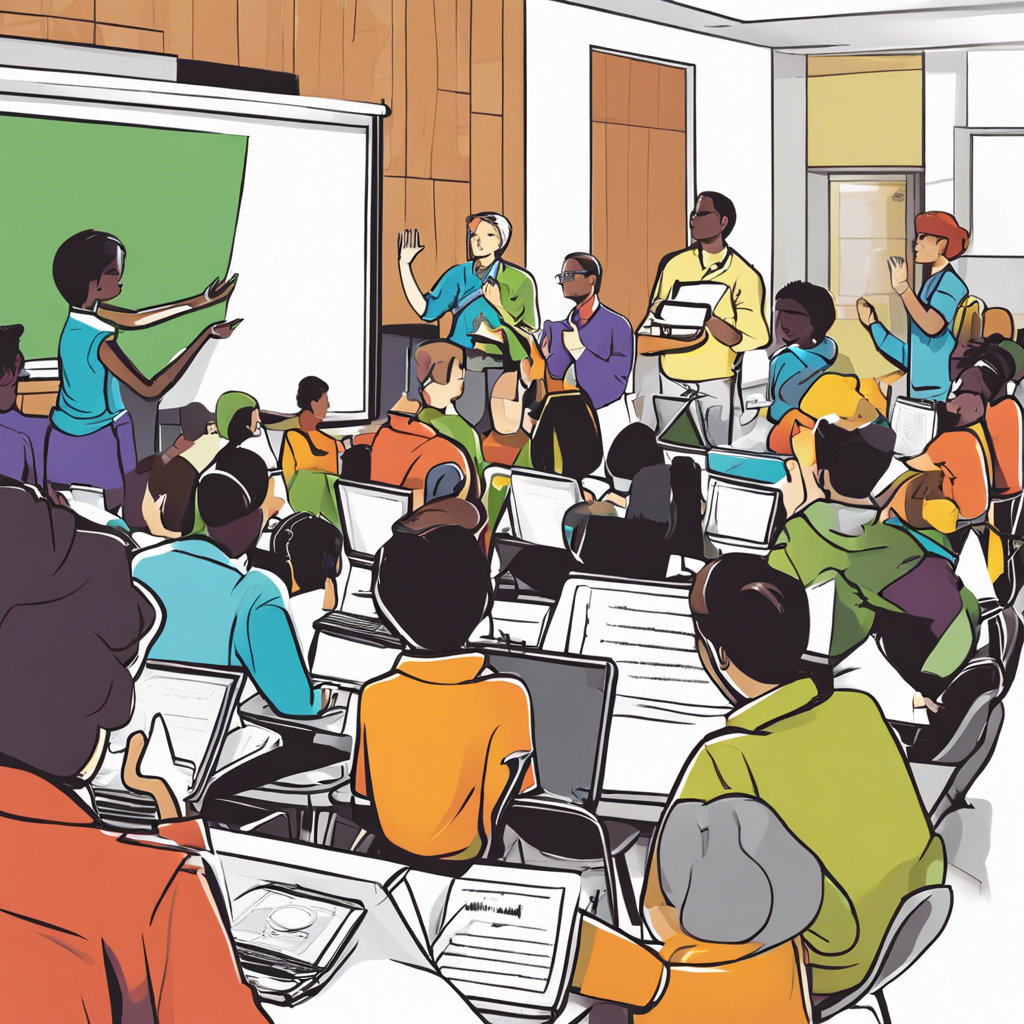Collaborative learning fosters 21st-century skills development, enhancing teamwork, communication, problem-solving, and critical thinking.
In today’s rapidly evolving world, educational approaches that cultivate a diverse set of skills are crucial for students’ success. Among these is the concept of collaborative learning, a powerful methodology that goes beyond traditional instructional methods. By encouraging students to actively participate in their learning journey, collaborative learning fosters the development of essential 21st-century skills, preparing them for a complex and interconnected global society. This article explores the significance of collaborative learning and its role in nurturing vital competencies for the future.
Understanding Collaborative Learning
Collaborative learning is an educational approach that emphasizes active student engagement and group interaction. Unlike traditional lecture-based teaching, it involves students working together in small groups or teams to accomplish shared learning goals. This method encourages peer-to-peer learning, where students teach and learn from one another, fostering a sense of collective responsibility and enabling them to develop important social and cognitive skills.
As technology continues to reshape the educational landscape, collaborative learning is gaining traction as a highly effective method, particularly in the context of online learning platforms. A study by UNESCO highlights how online collaborative learning can significantly enhance student outcomes by promoting active participation and critical thinking. By embracing collaborative learning, educators can create a dynamic learning environment that better prepares students for the challenges and opportunities of the modern world.
Key Benefits of Collaborative Learning
Enhanced Critical Thinking and Problem-Solving Skills
Collaborative learning encourages students to think critically and solve problems collectively. When working in groups, they are exposed to different perspectives and approaches, which broadens their understanding of complex topics. Through discussions and debates, students learn to analyze information, evaluate alternatives, and make informed decisions, thus honing their critical thinking and problem-solving abilities.
A recent study by the American Psychological Association found that collaborative learning environments promote better problem-solving skills compared to individual learning.
Improved Communication and Teamwork
Collaborative learning environments provide students with ample opportunities to develop effective communication and teamwork skills. As they work together on tasks and projects, students learn to express their ideas clearly, actively listen to others, and provide constructive feedback. These skills are invaluable in a world where collaboration across diverse teams is increasingly common.
Fostering Creativity and Innovation
By encouraging students to think outside the box and share ideas, collaborative learning nurtures creativity and innovation. In group settings, students can build on each other’s ideas, leading to the development of novel solutions and approaches. This fosters a culture of experimentation and risk-taking, essential components of innovation in the 21st century.
Implementing Collaborative Learning
Strategies for Effective Collaboration
To ensure the success of collaborative learning, educators can employ various strategies. These include setting clear group goals, providing structured guidelines for group work, and offering opportunities for students to reflect on their collaborative experiences. Encouraging active participation and assigning roles within groups can also promote equal contribution and engagement.
A study by the Wider Research Team highlights the effectiveness of various collaborative learning strategies in enhancing student engagement and learning outcomes.
Overcoming Challenges
While collaborative learning offers numerous benefits, it may also present challenges such as managing group dynamics, ensuring equal participation, and addressing potential conflict. Educators can mitigate these challenges by setting clear expectations, promoting a culture of respect and inclusion, and providing guidance on effective communication and conflict resolution.
FAQs
How does collaborative learning differ from traditional teaching methods?
Collaborative learning shifts the focus from teacher-led instruction to student-centered learning. It encourages active participation, group interaction, and peer-to-peer learning, promoting a more dynamic and engaging educational experience.
What are some examples of collaborative learning activities?
Collaborative learning activities include group projects, problem-solving exercises, debates, peer teaching, and collaborative writing projects. These activities promote teamwork, critical thinking, and creativity.
How can educators assess collaborative learning outcomes?
Assessment of collaborative learning can include both individual and group evaluations. Educators can assess individual contributions, group dynamics, and the overall quality of the collaborative process and product. Portfolios, peer evaluations, and self-reflections are useful tools for assessing collaborative learning outcomes.
Conclusion
Collaborative learning is a powerful tool for fostering the development of 21st-century skills in students. By encouraging active participation, critical thinking, communication, teamwork, and creativity, this approach equips students with the capabilities they need to thrive in a rapidly changing world. As educators continue to explore innovative teaching methods, collaborative learning stands out as a promising strategy to prepare students for success in their academic and professional lives.
